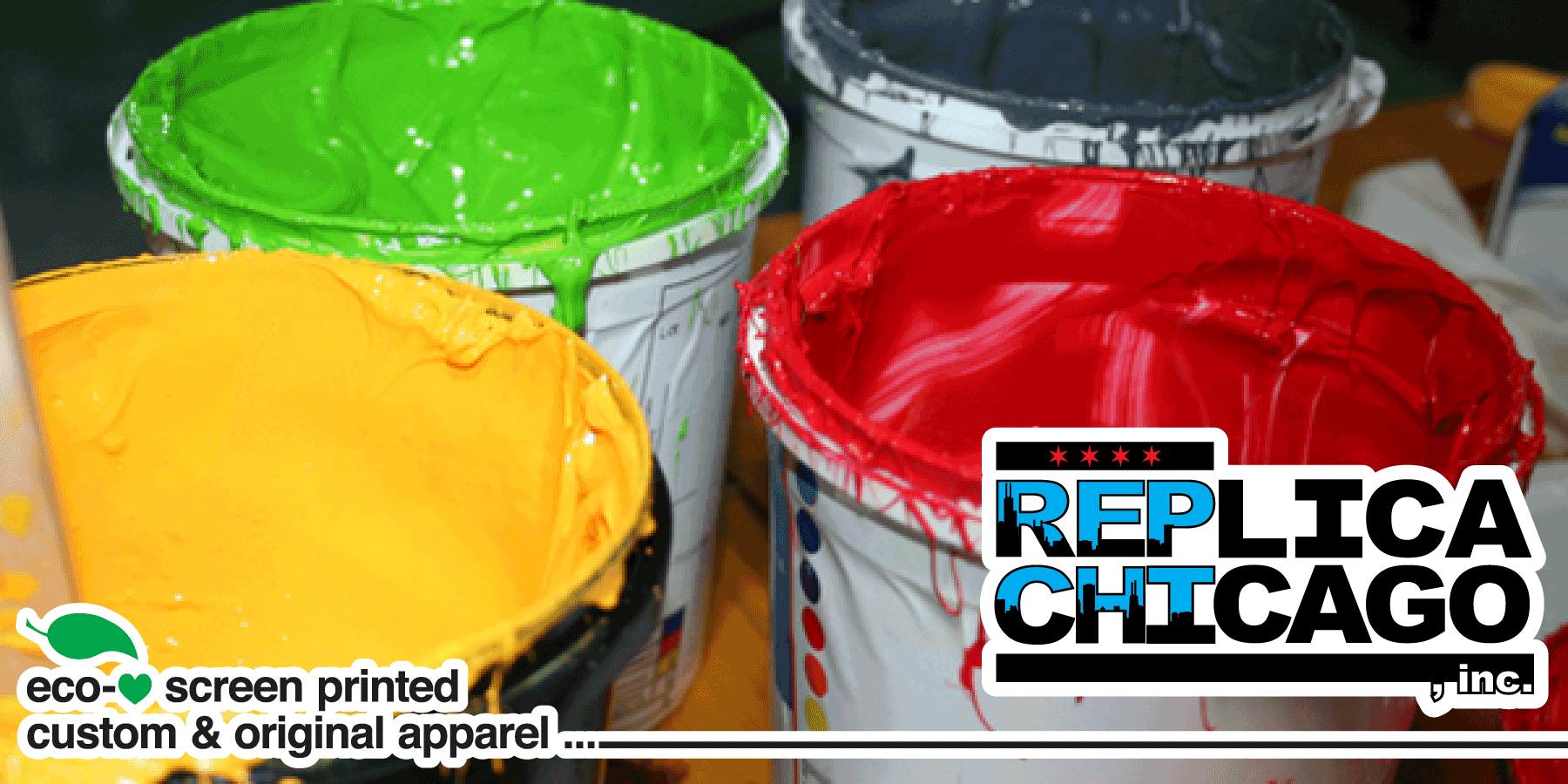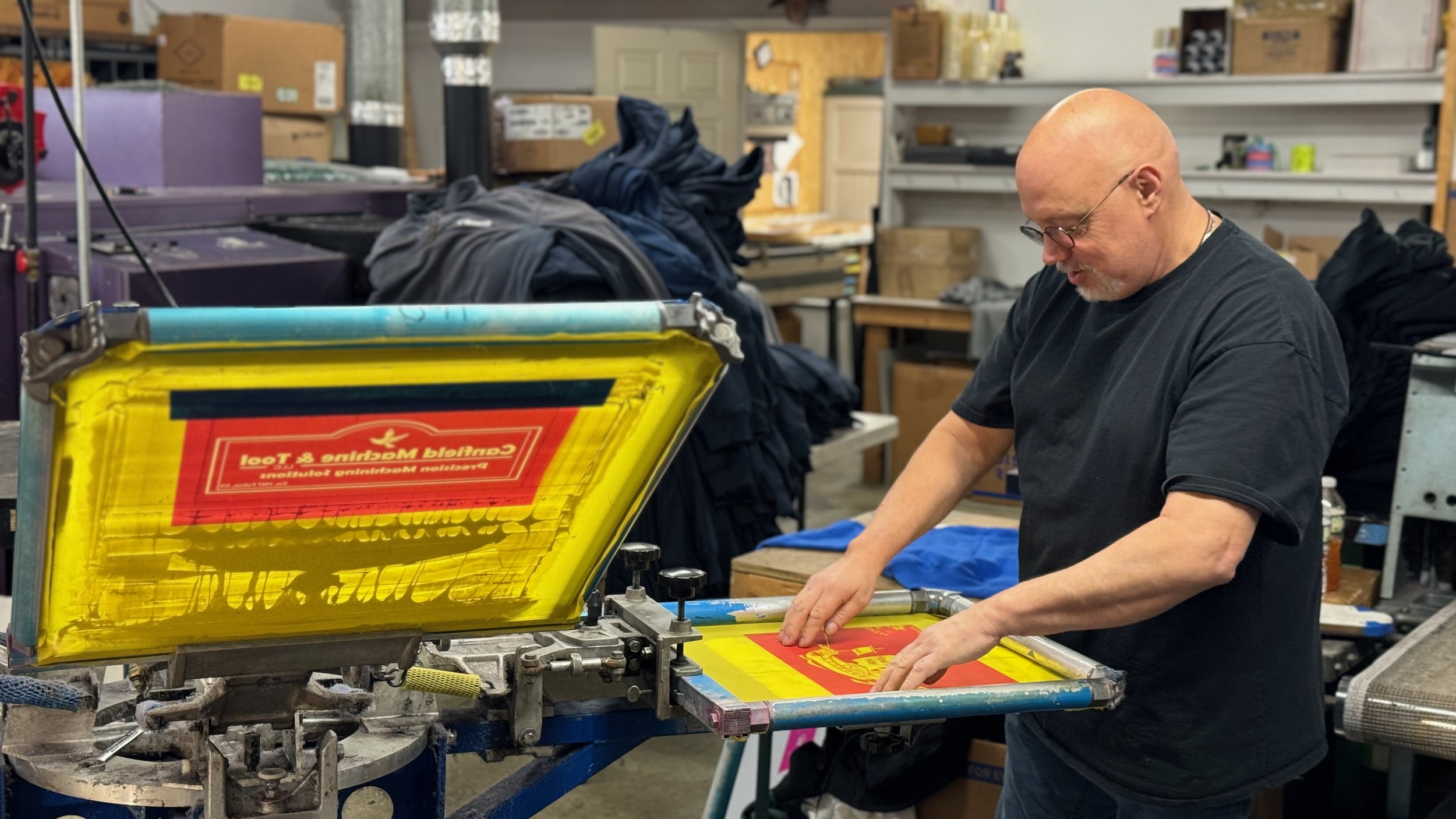Beginner-Friendly Screen Printing Kit for DIY Projects
Beginner-Friendly Screen Printing Kit for DIY Projects
Blog Article
The Ultimate Screen Printing Kit: Important Tools for Successful Garment Printing
When it comes to evaluate printing, having the right devices can make all the distinction. What about the inks and displays? You'll soon uncover how these components work with each other to elevate your printing game.
Recognizing Display Printing Fundamentals
When you involve yourself in screen printing, you'll uncover it's both a science and an art. This strategy involves moving ink via a mesh screen onto textile, producing vivid designs. You'll start by preparing your screens, which calls for applying a light-sensitive solution. Once dried, you reveal the display to UV light with your design put on top, enabling you to produce a stencil.
Next, you'll set up your printing station, aligning your screen with the garment. Using a squeegee, you'll push the ink through the screen, making sure even insurance coverage. The charm of screen printing depends on its adaptability; whether you're printing elaborate patterns or bold graphics, the process continues to be the very same.
As you technique, you'll learn about ink kinds, drying out times, and color mixing. Each print is an opportunity to fine-tune your technique and express your creative thinking, making display publishing a rewarding endeavor for anybody enthusiastic regarding style.
Vital Parts of the Display Printing Kit
To begin with display printing, you need to comprehend the vital components of your set. You'll intend to familiarize on your own with the basic devices, the kinds of emulsions and inks you'll use, and the tools for application. Each component plays an important function in accomplishing top quality prints on your garments.
Standard Equipment Introduction
A well-appointed screen printing kit is crucial for any individual looking to create sensational garment layouts. Begin with a sturdy screen printing framework, which holds your mesh tightly for specific printing. You'll also require a squeegee to press ink through the mesh onto your fabric. Do not fail to remember the exposure unit or light resource, crucial for transferring your layout onto the screen. A washout terminal aids you clean screens after usage, ensuring they await your following task. Lastly, buy a registration system to align several shades accurately. With these essential components, you'll have a solid structure for your screen printing journey and can focus on bringing your creative visions to life.
Emulsions and inks
After collecting the fundamental tools, your next focus needs to be on inks and solutions, which play an essential role in achieving durable and vibrant prints. When selecting inks, take into consideration water-based, plastisol, or discharge inks based on the fabric type and preferred surface. Water-based inks are eco-friendly and soft on garments, while plastisol supplies longevity and bright colors.
Solutions, on the various other hand, are necessary for creating your displays. You'll want to select a top notch solution that matches your ink kind and exposure method.
Tools for Application

Picking the Right Screens for Your Jobs
When you're picking displays for your projects, the mesh count and frame product are vital aspects to think about. A greater mesh count is great for great information, while the right structure product can improve longevity and stability. Understanding these aspects will aid you accomplish the most effective cause your screen printing endeavors.
Display Mesh Count
Choosing the ideal screen mesh count is crucial to achieving the desired outcomes in your screen printing projects. The mesh count refers to the number of strings per inch in the display, affecting just how much ink obtains moved onto your garment. Always consider the type of ink and textile you're making use of, as these factors affect the mesh matter selection.
Frame Material Options
The display frame product you choose plays a considerable role in the top quality of your prints. You've obtained a few choices to review, each with its benefits. Light weight aluminum frameworks are lightweight, resilient, and immune to corrosion, making them excellent for long-lasting a fantastic read use. They supply outstanding tension, ensuring crisp prints. On the various other hand, wood frames are extra conventional and can be a lot more economical, but they're much heavier and may warp over time. If you're simply beginning, you could like light weight aluminum for its dependability. For bigger projects, choose frameworks that can stand up to the stress needed for great information. Inevitably, select a material that matches your operations and budget plan while guaranteeing your prints appear looking sharp and specialist.
Selecting Inks for Different Fabrics
How do you assure your screen printing styles look last and vivid on numerous textiles? Selecting the appropriate ink is key. If you're printing on polyester or synthetic blends, consider using plastisol inks.
Do not forget specialized inks like discharge or metallic inks. Discharge inks can eliminate dye from textile, leaving a soft print, while metallic inks add a glossy surface that attracts attention. Always test your inks on the specific fabric prior to dedicating to a large run; this aids you evaluate shade vibrancy and sturdiness.
Finally, keep in mind the fabric's weight and appearance. Choosing the ideal ink for each fabric type will assure that your styles not just look terrific yet likewise stand up to the examination of time.
The Significance of Squeegees in Printing
Squeegees play an essential duty in accomplishing high-quality prints in display printing. They're your key device for moving ink through the stencil onto the textile, and the appropriate squeegee can make all the difference. When you use regular pressure with a squeegee, you ensure an even circulation of ink, lowering the possibilities of uneven or blotchy prints.
Picking the right durometer or hardness of your squeegee is vital, as it impacts how much ink is drawn with the mesh. A softer squeegee is great for comprehensive layouts, while a firmer one functions well for vibrant graphics. Furthermore, the width of the squeegee ought to match your screen size to enhance your printing process.
Taking some time to master your technique with the squeegee will result in cleaner, sharper prints. So, do not read the article underestimate this essential device-- get to know it, and you'll boost your screen printing video game.
Preparing Your Art Work and Emulsion
Attaining excellent prints begins long before you get your squeegee. Verify your art work is high-resolution and formatted correctly. Usage vector graphics for crisp lines and scalability. When you enjoy with the layout, print it on openness movie, remembering that the darker the image, the better it blocks light during direct exposure.
Following, pick the appropriate emulsion for your job. Use it uniformly to your screen in a dimly lit area to stop premature direct exposure. Permit it to dry completely, preferably in a dark area, to ensure outstanding results. As soon as your display is prepared, expose it to UV light according to your emulsion's directions. The light will solidify the emulsion where it strikes, leaving your design unexposed.
After cleaning out the unexposed solution, allow the display completely dry fully. With your artwork and emulsion prepared, you're established for the printing process!
Maintenance Tips for Long-lasting Devices
Although it could appear tedious, regular maintenance of your display printing devices can greatly extend their life expectancy and warranty constant results. Start by cleaning your screens immediately after use. Make use of a mild solvent to get rid of ink residue; this assists protect against accumulation that can destroy future prints. Shop your screens level to avoid warping, and keep them far from direct sunshine. custom screen printing.
For squeegees, wipe the blade after each usage to avoid ink from drying on it. Regularly inspect for nicks or damages and change them as needed. Don't neglect your direct exposure unit-- tidy the glass surface area regularly to Read More Here validate optimal light direct exposure.

Regularly Asked Questions
Can I Screen Publish on Dark Colored Fabrics?
Yes, you can screen print on dark colored textiles! Just utilize an appropriate nontransparent ink made for dark materials. It'll ensure your layouts pop and look vivid against the fabric's history. Satisfied printing!
Exactly how Do I Clean My Screens After Printing?
To clean your displays after printing, you'll require a pressure washer or pipe to remove excess ink. Then, utilize a display cleaner or mild detergent with a soft brush to scrub away residue. Wash thoroughly.
What Safety Equipment Do I Need While Display Printing?
When screen printing, you'll need handwear covers to safeguard your hands, a mask to avoid inhaling fumes, and security goggles to shield your eyes from inks and chemicals. Bewaring assurances a risk-free and satisfying experience.
Can I Use the Set for Various Other Products Besides Textile?
Yes, you can make use of the package for other products besides textile. It functions well on surfaces like paper, plastic, and timber. Simply make certain the ink and strategies fit the material you pick.
How Long Does It Take for Ink to Heal?
Ink typically takes concerning 24 hr to heal fully, yet it can vary based upon the type and thickness. You'll intend to check the supplier's guidelines for specific curing times to assure perfect outcomes.
Utilizing a squeegee, you'll push the ink with the display, guaranteeing even protection. You'll need a trustworthy squeegee, which assists uniformly distribute ink across your screen.Picking the right screen mesh count is crucial to achieving the preferred outcomes in your screen printing projects. The mesh count refers to the number of strings per inch in the screen, affecting exactly how much ink gets moved onto your garment.To clean your screens after printing, you'll need a stress washer or tube to remove excess ink.
Report this page